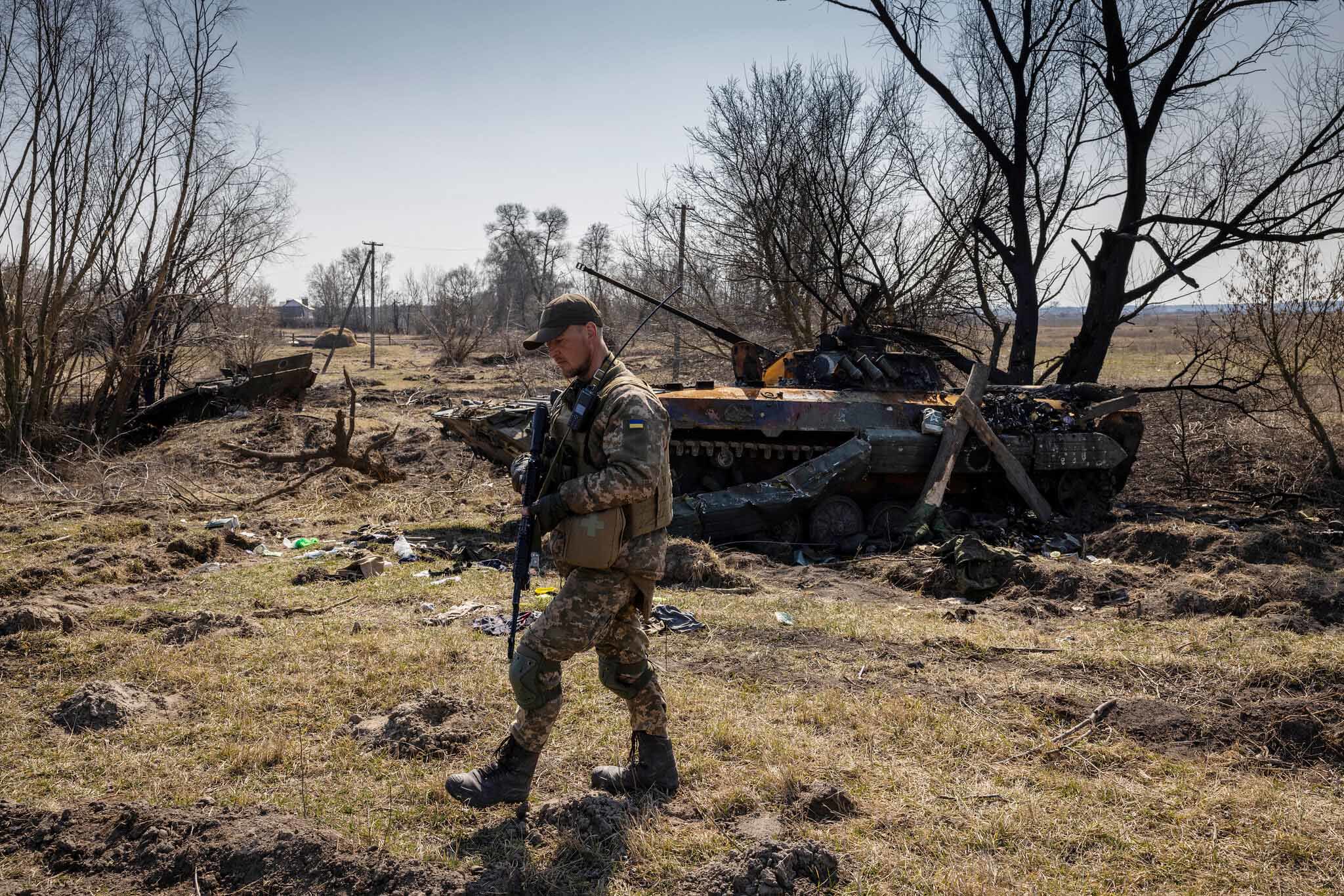Time for a U.N. Peace Enforcement Operation in Northern Ukraine?
A cease-fire and peace enforcement operation in areas from which the Russians have retreated would certainly not be easy but could be an initial step toward a collective path forward.

Published by The Lawfare Institute
in Cooperation With

Now that the Russian military in Ukraine has retreated north to positions in Belarus and Russia—presumably to refit and rearm before moving east—a de facto cease-fire is in place in Kyiv and central Ukraine. This could present an opportunity for the U.N. to call for a formal cease-fire in reclaimed territory and issue a recommendation to willing states to move into Ukraine with a peacekeeping force.
The U.N. Charter was established to “save succeeding generations from the scourge of war.” Peacekeeping has since evolved as “one of the main tools” for maintaining international peace and security. There are two peacekeeping routes: one that establishes a negotiated settlement, and the other that allows for “deployment of U.N. peace operations into volatile post-conflict settings where the State is unable to maintain security and public order.” The current situation in northern Ukraine, given the cessation of hostilities in this reclaimed Ukrainian territory, falls into the latter.
Unfortunately, the tools available to the U.N. in these situations are limited because Russia—as a permanent member of the U.N. Security Council—maintains veto power over any peacekeeping (or enforcement) operations. However, this is not to say that no tools exist. In 1950, in response to the Korean conflict, and in an effort to avoid Russian Security Council vetoes that likely would have blocked support to South Korea, the U.N. General Assembly passed the “Uniting for peace” Resolution 377 (V)A.
Resolution 377 allows the U.N. General Assembly to draft and vote on “appropriate recommendations” to U.N. member states for collective action (including the use of force) to restore peace. One recommendation could be a formal call for a cease-fire. Another could be a call on willing nations to form a peacekeeping coalition force to enter Ukrainian territory and maintain the pause in hostilities. Such peace enforcement operations often include activities to prevent “spill-over of conflict across borders; support for the restoration and extension of State authority; and promotion of social and economic recovery and development.” These are all tasks that could relieve Ukraine’s humanitarian crisis.
Such a resolution would not be legally binding, nor would it be considered a U.N. authorization for the use of force in accordance with Chapter VII of the U.N. Charter for peacekeeping operations. However, it would constitute a voluntary call upon the international community to assist in ending the conflict. It would also present a broader opportunity to develop customary international law with regard to these types of conflicts. Many state practices that promote peace and develop into binding customary international law often evolve first from voluntary, nonbinding U.N. declarations and resolutions. For example, the nonbinding 1948 Universal Declaration of Human Rights was a significant influence on “national constitutions, treaties [including the United Nations Convention Against Torture], and international laws[,]” according to Celine Van den Rul for E-International Relations.
Even if the war continues in the eastern and southern parts of Ukraine, the U.N. could recommend that the cease-fire be localized at first in northern Ukraine so that the multinational force could be deployed to enforce the peace and security in and around Kyiv. The recommendation could also allow for the development of humanitarian corridors to bring much-needed humanitarian relief and supplies to the northern parts of Ukraine. It could also request that the multinational coalition force monitor and—if necessary—enforce the peace along the Belarusian and Russian borders with Ukraine. Such conditions may also enable the coalition to institute a no-fly zone for these areas, which could protect refugee and peace negotiation activities.
Arriving at a U.N. General Assembly 377 resolution and determining leadership of the peace enforcement operation would be a complex process. However, just as with the unlawful aggression that sparked the Korean War, the potential case for action in Ukraine is likely made more compelling because Russia’s initial invasion lacked a legal basis, either in self-defense or pursuant to Security Council authorization. Implementation of the recommendation could be led by the European Union, NATO, or some other regional organization or coalition. Sweden had previously expressed a willingness to lead a peacekeeping force in the Donbas, assuming that Russia and Ukraine agreed (although this never came to fruition). Poland has more recently called for a NATO-led effort protected by armed forces to “provide humanitarian and peaceful aid to Ukraine.”
The U.N.—as well as Ukraine, of course—might benefit from this dialogue. An inability to move from well-meaning statements of outrage and support for Ukraine to actionable solutions would likely not bode well for the future of this over-70-year-old institution. Putting forth such a resolution, gaining a significant majority of members to support the recommendations and creating a coalition would be extremely difficult. Notwithstanding these significant challenges, such a 377-resolution mechanism could seek to provide a restoration of Ukraine’s northern border and a temporary cessation of hostilities in the northern area.
Some observers might caution that the establishment of a U.N.- or NATO-led peacekeeping mission to northern Ukraine at this time would be escalatory. Yet the current situation—growing evidence of war crimes, continued apparent orchestrated attacks and criminality against Ukraine’s population, and the demonstrated violations of the law of armed conflict—does not seem sustainable. A cease-fire and peace enforcement operation in areas from which the Russians have retreated would certainly not be easy but could be an initial step toward a collective path forward.




